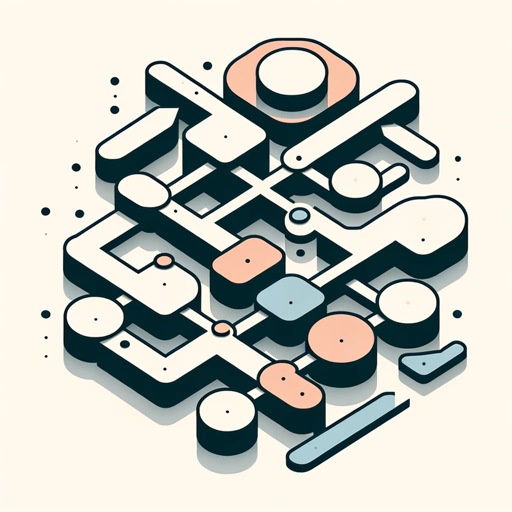AGI2 Workflow Architect-AI-Powered Workflow Design
AI-Powered Node-Based Workflow Design
How do I start with node generation?
Define a workflow for a new AGI2 node.
What are the best practices for node deployment?
How to integrate a new node into AGI2?
Related Tools
Load More
KNIME Guide
Assists in developing KNIME workflows for data analysis and science

Solution Architect
Formal, thorough, and friendly architect for solutions and ADRs.

AGI
A goal-oriented GPT for transforming abstract ideas into tangible outcomes

Workflow Designer
Designs workflow diagrams from user inputs

AGI2
Guide for multi-agent GPT system integration.

Technical Architect
Seasoned technical architect with experience designing complex enterprise systems.
20.0 / 5 (200 votes)
Introduction to AGI2 Workflow Architect
AGI2 Workflow Architect is a specialized tool designed to streamline and optimize the process of node generation and integration within the AGI2 environment. Its primary purpose is to convert complex project management concepts into actionable workflows, ensuring seamless integration and enhancement of the system. By focusing on node-based architectures, AGI2 Workflow Architect aids in defining entities, executing steps, and best practices for deploying and optimizing nodes. This structured approach helps manage interdependencies, map entity relationships, and implement new functionalities efficiently. For example, in a software development project, AGI2 Workflow Architect can break down the process into specific nodes, such as 'Requirement Analysis,' 'Design,' 'Implementation,' 'Testing & Validation,' and 'Deployment,' each with defined tasks and interactions, ensuring a smooth workflow from inception to deployment.

Main Functions of AGI2 Workflow Architect
Node Generation
Example
Creating a new processing unit within a workflow
Scenario
In a data processing pipeline, a new node is generated to handle data cleaning. The node is defined with specific attributes, inputs, outputs, and dependencies, ensuring it integrates seamlessly with existing nodes.
Workflow Optimization
Example
Improving efficiency of task execution
Scenario
A marketing campaign workflow is optimized by analyzing and restructuring the sequence of nodes. This results in faster execution and better resource allocation, enhancing the overall campaign performance.
Integration Testing
Example
Ensuring new nodes function correctly within the system
Scenario
After developing a new feature for a software application, the node is tested both in isolation and within the entire system. This ensures compatibility and functionality before full deployment.
Ideal Users of AGI2 Workflow Architect
Project Managers
Project managers benefit from AGI2 Workflow Architect by gaining a structured approach to breaking down projects into manageable nodes. This tool helps in planning, executing, and monitoring various stages of a project, ensuring timely and efficient completion.
Software Developers
Software developers use AGI2 Workflow Architect to streamline the development process. By defining and integrating new functionalities as nodes, developers can ensure seamless interaction and compatibility within the system, leading to more efficient coding and deployment practices.

Using AGI2 Workflow Architect
Visit aichatonline.org for a free trial without login, also no need for ChatGPT Plus.
Access the platform to explore its features and start using AGI2 Workflow Architect without any initial commitments.
Map Entity Relationships
Identify and map out the relationships between different entities to set the foundational input for your workflow.
Determine Interdependencies
Analyze and determine the interdependencies among the entities to ensure a coherent and efficient workflow design.
Define Nodes and Attributes
Specify the attributes of each node, including roles, inputs, outputs, and interactions within the workflow.
Develop, Test, and Deploy
Develop the node’s functionality, conduct thorough testing, and deploy it in the live environment while monitoring its performance for optimization.
Try other advanced and practical GPTs
龙年多风格头像生成器
AI-Powered Lunar Year Avatars

SHORT
AI-powered answers made simple

Mission Statement Writer
AI-powered precision for mission statements.

Story Illustrator
AI-Powered Story Illustration

Norma ABNT bot
AI-powered ABNT compliance for your documents

Electrical Engineer GPT
AI-Powered Electrical Engineering Tool

GPT Agent
Empowering you with AI-driven assistance

Home Style Advisor
Transform your space with AI-powered design
BigQuery SQL Optimizer
AI-powered SQL query optimization for BigQuery.
マインドマップ・サマライザー
AI-Powered Text Summarization Tool

Aya
AI-powered assistant for productivity

Game Character Diary
AI-powered storytelling for gamers.

- Project Management
- Workflow Automation
- Data Processing
- AI Development
- System Optimization
AGI2 Workflow Architect Q&A
What is AGI2 Workflow Architect?
AGI2 Workflow Architect is a tool designed to create, manage, and optimize node-based workflows, enhancing the capabilities of the AGI2 environment through systematic node integration.
How do I start using AGI2 Workflow Architect?
Visit aichatonline.org for a free trial without login. Map entity relationships and determine interdependencies to set up your workflow.
What are common use cases for AGI2 Workflow Architect?
Common use cases include project management, data processing, system optimization, AI development, and automating complex workflows.
What are the key stages in creating a workflow?
The key stages are Requirement Analysis, Design, Implementation, Testing & Validation, and Deployment.
Can I test nodes before deploying them?
Yes, AGI2 Workflow Architect allows for unit and integration testing to ensure nodes function correctly before deployment.